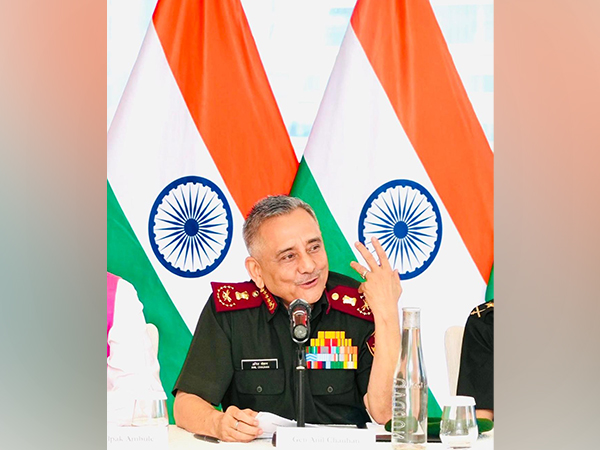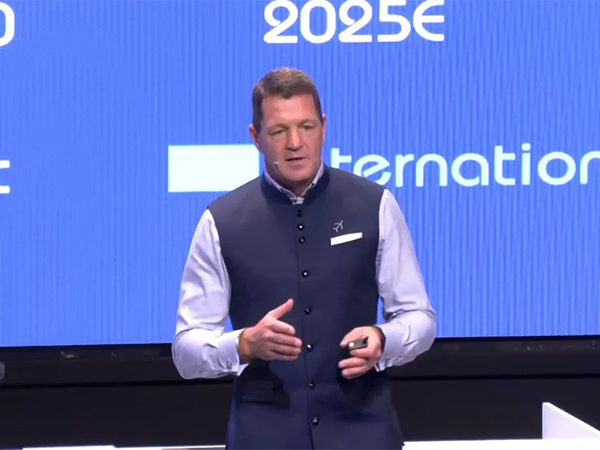Singapore City [Singapore], May 31 (ANI): Chief of Defence Staff (CDS) General Anil Chauhan emphasised the importance of network-centric warfare, where integration and automation across domains become critical, saying that modern warfare is undergoing a complex convergence of tactical, operational and strategic layers.
General Chauhan held an engagement with think tanks from various nations across the globe on the sidelines of the Shangri-La Dialogue.
Addressing the intellectually empowered group on ‘Future Wars and Warfare’, on Friday, the CDS highlighted important aspects of network-centric warfare.
“Modern warfare is undergoing a complex convergence of tactical, operational and strategic layers; old and new domains (land, air, sea, cyber and space); and even of time and space. This convergence reshapes tactics, demanding demassification of battlefields, distributed force application, non-linear operations and a move away from large static platforms toward flexible, deceptive strategies,” General Chauhan said.
“I see modern warfare as a convergence of old and new methods, domains, timeframes and tactics. We’re no longer fighting linear wars; we’re operating across distributed networks, applying force in non-linear ways, where deception is becoming more important than surprise. Understanding this convergence is key to preparing for future conflicts,” he added.
He further stressed the need to tackle disinformation during warfare. He said that 15 per cent of armed forces time during operations was spent countering fake narratives, underlining the need for a dedicated information warfare vertical.
As per CDS’s address, India’s approach to narrative control should be based on verified facts and evidence, even if this means a slower public response. “Combating fake news was a constant effort. Our communication strategy was deliberate; we chose to be measured, not reactive, because misinformation can quickly distort public perception during high-stakes operations,” General Chauhan further added.
On countering disinformation during Operation Sindoor, he said, “India has always built its narratives on solid ground, even if we’ve sometimes been slow to present them. For instance, in the first three days, two women officers were our primary spokespeople because the actual military leadership were directly engaged in fast-moving operations. It was only after the 10th that the DGMOs came forward to brief the media.”
“As someone directly involved in these operations, I can say that cyber did play a role in the conflict, but its impact was limited. While both sides did experience attacks, including some denial-of-service efforts, our military systems are air-gapped, meaning they’re not connected to the internet and are therefore largely secure. Attacks on public-facing platforms like school websites may have occurred, but they did not affect operational systems,” he added.
Highlighting the need for real-time integration across air, land, sea and cyber domains in modern warfare, CDS Chauhan said, “What matters most in modern warfare is the networking of systems and real-time integration across air, land, sea and cyber domains. If you have great tech but it’s not connected, you can’t fully leverage it. We must also carefully consider where the cutting edge of technology should reside: in the weapon, the platform, or the network? That’s a key strategic question.”
Speaking about the structural reforms and integration in the military, he said, “Regarding structural reforms, earlier we didn’t have true jointness or integration in the military. Now, after initiatives and operational experiences, we are moving toward integrated commands and leaner, more flexible structures. We’ll need separate organisations for drones, EW, UTAPs (Unmanned Teaming Aerial Platforms), etc.”
“Doctrinally, we must update our understanding of multi-domain operations, cyber, space, ISR, and joint targeting; all of this needs work. Even our professional military education is changing. For the first time, we have a truly joint staff course where 40 officers from all three services train together for a full year. That’s a major shift,” he added. (ANI)
Disclaimer: This story is auto-generated from a syndicated feed of ANI; only the image & headline may have been reworked by News Services Division of World News Network Inc Ltd and Palghar News and Pune News and World News
HINDI, MARATHI, GUJARATI, TAMIL, TELUGU, BENGALI, KANNADA, ORIYA, PUNJABI, URDU, MALAYALAM
For more details and packages















